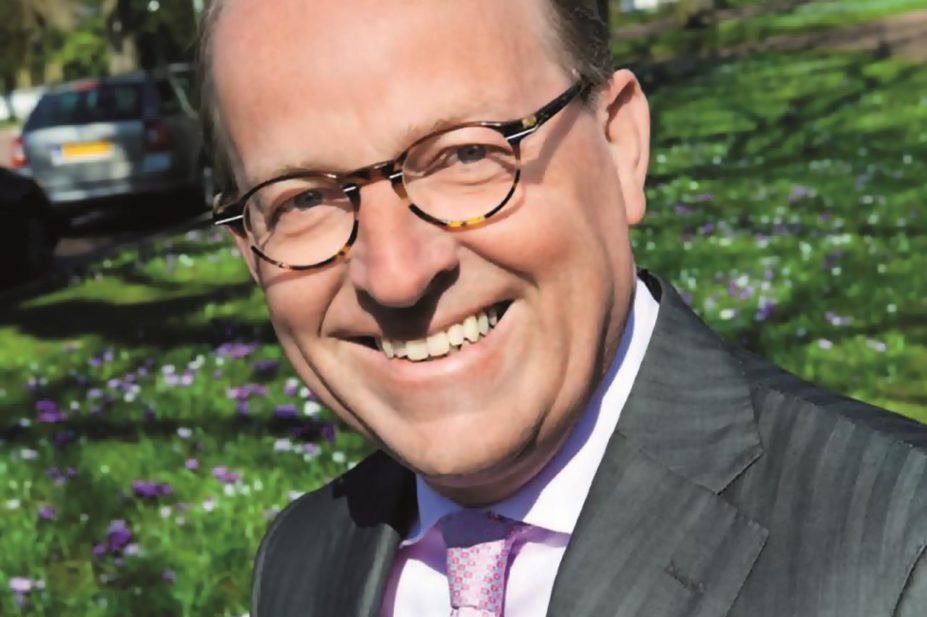
With a career spanning 30 years in the industry, community pharmacy and as a board member of various pharmacy organisations, Jan Smits is well positioned to take on the role of president of the Pharmaceutical Group of the European Union (PGEU) next year. However, for Smits, the presidency is business as usual – he has been campaigning on behalf of community pharmacy for many years.
PGEU plans
“My view is that the optimal use of the expertise of community pharmacists is an investment in sustainable healthcare. This is relevant considering the rising costs of healthcare,” he emphasises. “If the community pharmacist takes an active role in collaborative care and is trying to help a patient with his therapy, I think that pays out.” In 2010, while he was a member of the PGEU, Smits initiated the idea for a blueprint for community pharmacy. The blueprint, which advocates that community pharmacists are best positioned to help patients get the most from their medicines, was published in 2012 and is now available on the website in a range of European languages.
“The PGEU is an umbrella organisation, representing national associations and professional bodies of community pharmacists in 34 countries,” Smits says. “What the PGEU does is to position community pharmacists in healthcare and tries to get everybody on the same track. For example, if you have a project in a country where they optimise use of inhalers for patients with chronic obstructive pulmonary disease, it’s valuable if this project can also be initiated in another country.”
Smits first became interested in the wider role of community pharmacy when he was president of the Royal Dutch Pharmacists’ Association. “I saw that it was necessary to convince stakeholders of the contribution pharmacists make to healthcare,” he says. Across Europe, ministers and stakeholders were cutting costs and community pharmacists’ workloads were increasing, he adds. “I saw the pressure and thought, is it right that this happens so easily?”
He is philosophical about how much can be achieved during his presidency, and insists that he will continue his advocacy of community pharmacy when his term ends because he is “convinced it’s right”. He states: “PGEU presidency is only a year… it’s like a relay, where every president is trying to follow a strategy over the years.”
Industrial beginnings
Smits’ career began at GlaxoSmithKline after he qualified as a pharmacist. “At the time, it was a booming company. It was growing fast and was developing several kinds of new medicines that were successful, so it was an exciting time,” he enthuses. “In industry as a young pharmacist, you get a lot of opportunities to learn a lot of things, like thinking on a strategic level… setting the goals, thinking about how you would like to achieve them — that’s what you really learn in industry and it helps me to do what I’m doing now.”
After 12 years at GlaxoSmithKline and Yamanouchi [a Japanese company], Smits decided to buy his own pharmacy. “I thought it would be nice to work for myself, to be an entrepreneur,” he says, adding that he wanted to use the skills he trained for at university. “It was a big challenge to go from the industry to my own pharmacy where I had to do everything myself on every level, including managing my personnel and being responsible for what is delivered to patients… it was a pleasure to do it.”
Twelve years later, he elected to join the board of the Royal Dutch Pharmacists’ Association. “At that time, pharmacists in the Netherlands were facing major challenges. [Because of] my experience in the industry and as an entrepreneur I brought a different [sort of] expertise to the board,” he explains. “I thought: ‘This is a real challenge.’ And I like challenges.”
Convincing colleagues
For aspiring board members, Smits has some words of caution. “It is essential that you understand that nothing is achieved in the very short term,” he emphasises. “If you have your own pharmacy and one night you think ‘ok, I’m going to change this’, then the next day you can start. It’s different if you are in a board with several people with several views. It takes more time to implement [plans] but, in the end, you will find the right strategy because there are so many people involved. If you can’t cope with that you shouldn’t be on the board,” he concludes.
He believes his own skills on the board lie in teamwork. “It’s a skill to manage a very diverse group of people where you are the first among equals,” he explains. “It’s about exchanging ideas and arguments, finding consensus and making a decision,” he adds.
“My career had different angles and they were all very interesting,” Smits says. “This has brought me where I am now.”


